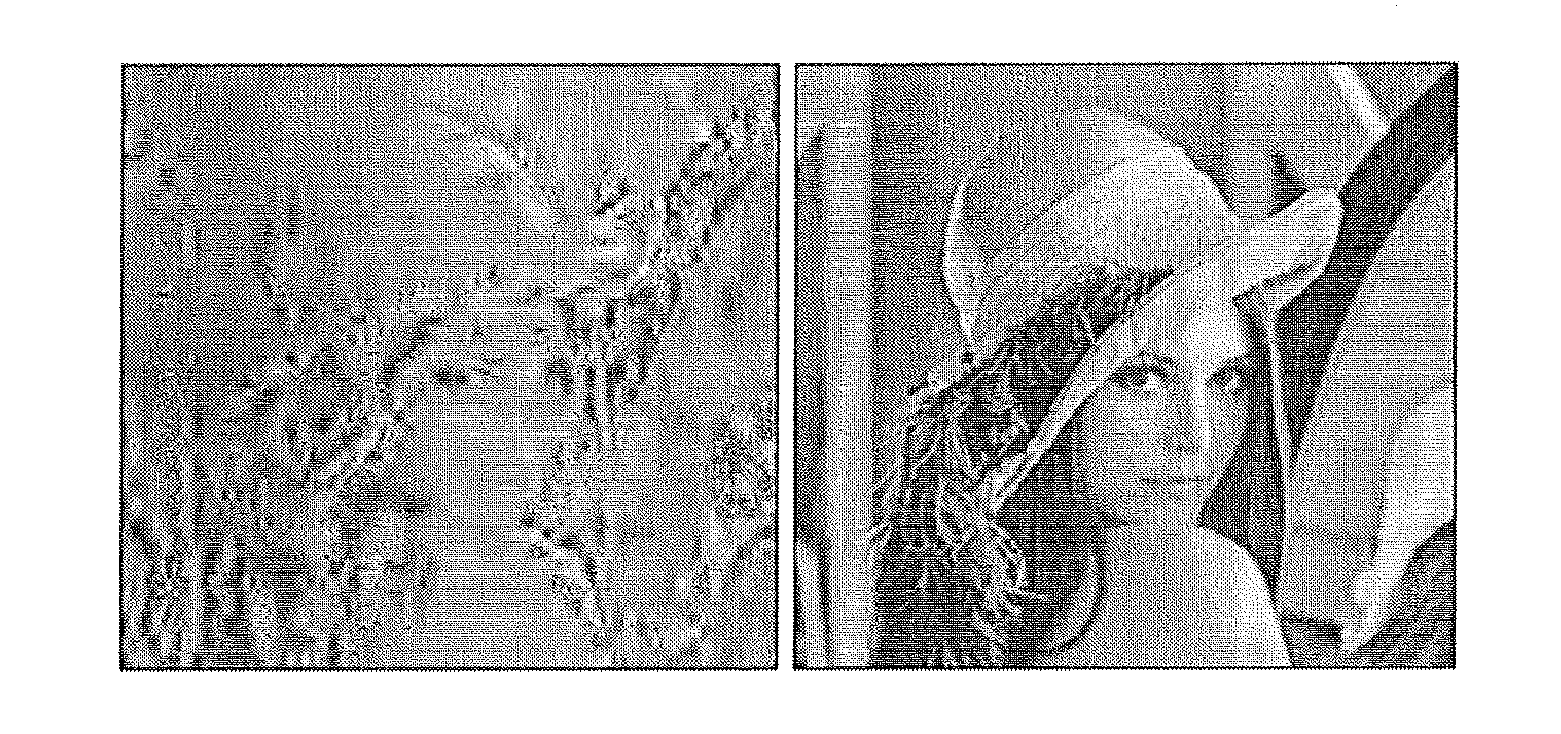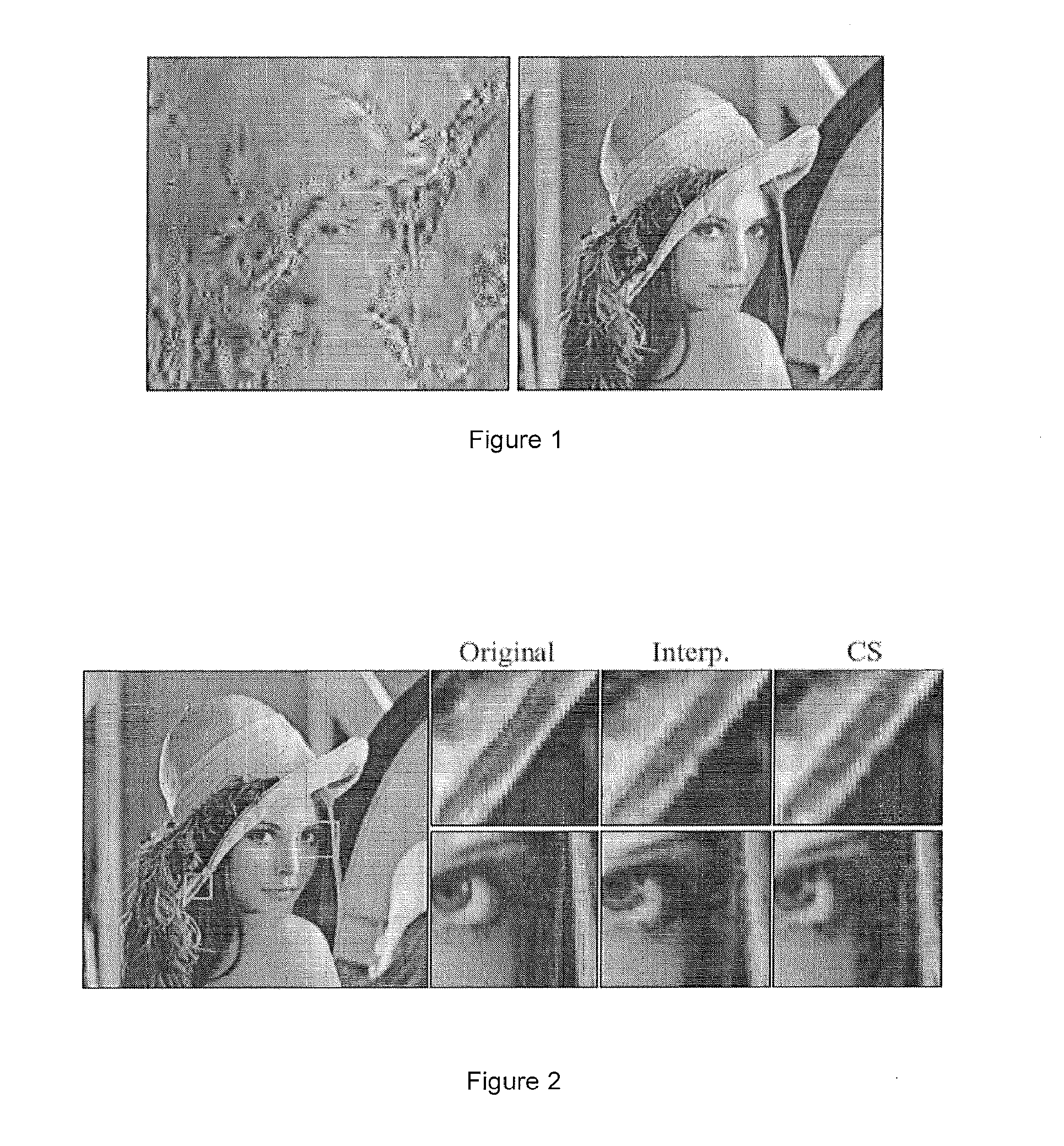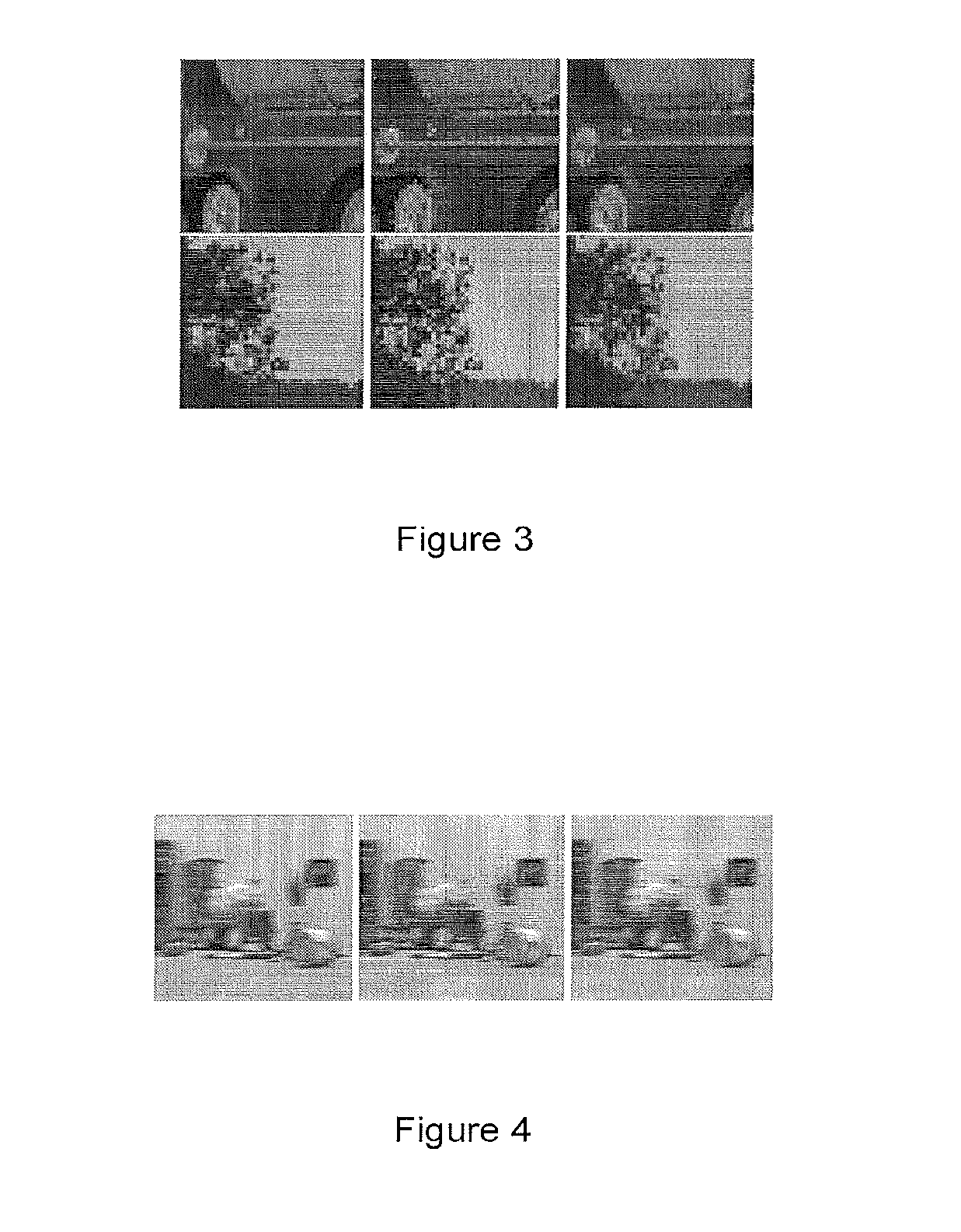System and methods of compressed sensing as applied to computer graphics and computer imaging
a sensing system and compression technology, applied in the field of can solve the problems of inability to efficiently perform computer graphics and computer imaging, inability to accurately fill in missing pixel information, and inability to meet the needs of real-world imaging applications, etc., to achieve high-quality resolution, accurate fill in missing pixel information, and high-quality resolution
- Summary
- Abstract
- Description
- Claims
- Application Information
AI Technical Summary
Benefits of technology
Problems solved by technology
Method used
Image
Examples
Embodiment Construction
[0073]The present invention is directed to a system and methods to accurately estimate missing pixel values using compressed sensing or sparse signal reconstruction. According to the present invention, a signal can be reconstructed very accurately from a small set of linear measurements given that the original image is sparse in a transform domain.
[0074]The present invention takes point samples, or a set of measured pixels, of a multidimensional function and reconstructs the signal from the set of samples assuming that the original signal is sparse in a transform domain (otherwise referred to herein as compressed sensing). The present invention is applicable to 2-D signals corresponding to images with applications in rendering and imaging. The present invention is also applicable to 3-D signals corresponding to video streams with applications in reconstruction and motion blur. The present invention is also applicable to signals in 4-D or more corresponding to applications in global ...
PUM
 Login to View More
Login to View More Abstract
Description
Claims
Application Information
 Login to View More
Login to View More - R&D
- Intellectual Property
- Life Sciences
- Materials
- Tech Scout
- Unparalleled Data Quality
- Higher Quality Content
- 60% Fewer Hallucinations
Browse by: Latest US Patents, China's latest patents, Technical Efficacy Thesaurus, Application Domain, Technology Topic, Popular Technical Reports.
© 2025 PatSnap. All rights reserved.Legal|Privacy policy|Modern Slavery Act Transparency Statement|Sitemap|About US| Contact US: help@patsnap.com



